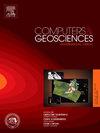基于物理方程驱动的混合监督叠前三参数反演方法
IF 4.4
2区 地球科学
Q1 COMPUTER SCIENCE, INTERDISCIPLINARY APPLICATIONS
引用次数: 0
摘要
基于深度学习的地震反演方法取得了重大进展。然而,监督学习网络在迁移学习中面临着标记数据有限、泛化能力差等挑战。同时,无监督学习的反演方法由于没有标记约束,往往反演精度不足。为了进一步提高反演精度,提出了一种由物理方程驱动的混合监督叠前三参数反演方法。该方法结合了监督学习和无监督学习,由物理方程驱动,受低频模型约束,同时采用多道反演策略。该方法有效地提高了弹性参数反演的连续性,解决了地震反演中标记数据稀缺导致精度下降的问题。为了充分整合反演结果中的高低频特征,进一步提高反演精度,将u形网络(Unet)与门控循环单元(GRU)相结合,引入了Unet-GRU网络。该方法首先在Marmousi2模型上训练监督网络,学习地震数据与反演参数之间的映射关系。经过训练后,将该网络应用于现场地震数据,生成初始反演结果。然后将这些结果用作无监督网络的输入,然后对最终输出进行前向建模处理。通过迭代优化,使合成地震资料与观测地震资料的误差最小,得到最终的反演结果。利用逆冲模型验证了该方法的可行性,并通过加入噪声进一步验证了该方法的鲁棒性。最后,将该方法应用于实际现场数据,并与传统反演方法进行了比较。结果表明,该方法显著提高了反演精度,在地震勘探开发中具有较强的实用性。本文章由计算机程序翻译,如有差异,请以英文原文为准。
Hybrid supervised prestack three-parameter inversion method based on physical equation driving
Seismic inversion methods based on deep learning have made significant progress. However, supervised learning networks face challenges such as limited labeled data and poor generalization in transfer learning. Meanwhile, unsupervised learning inversion methods, due to the absence of labeled constraints, often suffer from insufficient inversion accuracy. In order to further improve the inversion accuracy, a hybrid supervised pre-stack three-parameter inversion method driven by physical equations is proposed. This method integrates supervised and unsupervised learning, driven by physical equations and constrained by low-frequency models, while employing a multi-trace inversion strategy. It effectively enhances the continuity of elastic parameter inversion and addresses the accuracy degradation caused by the scarcity of labeled data in seismic inversion. To fully integrate high- and low-frequency features in the inversion results and further refine accuracy, the Unet-GRU network is introduced, combining the U-shaped Network (Unet) with the Gated Recurrent Unit (GRU). In this method, a supervised network is first trained on the Marmousi2 model to learn the mapping relationship between seismic data and inversion parameters. After training, the network is applied to field seismic data to generate initial inversion results. These results are then used as inputs for the unsupervised network, followed by forward modeling processing of the final output. By minimizing the error between synthetic and observed seismic data through iterative optimization, the final inversion results are obtained. The feasibility of this method is validated using the Overthrust model, and its robustness is further tested by adding noise. Finally, the approach is applied to real field data and compared with traditional inversion methods. The results demonstrate that the proposed method significantly improves inversion accuracy and offers strong practical applicability in seismic exploration and development.
求助全文
通过发布文献求助,成功后即可免费获取论文全文。
去求助
来源期刊

Computers & Geosciences
地学-地球科学综合
CiteScore
9.30
自引率
6.80%
发文量
164
审稿时长
3.4 months
期刊介绍:
Computers & Geosciences publishes high impact, original research at the interface between Computer Sciences and Geosciences. Publications should apply modern computer science paradigms, whether computational or informatics-based, to address problems in the geosciences.
 求助内容:
求助内容: 应助结果提醒方式:
应助结果提醒方式:


